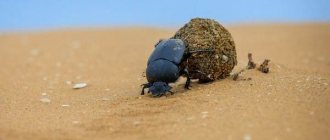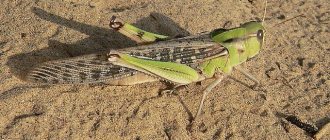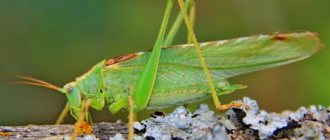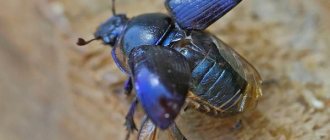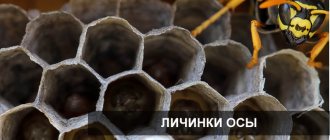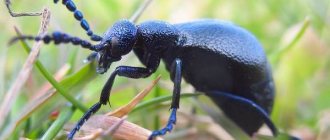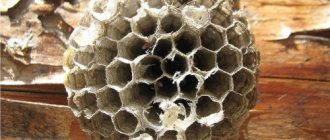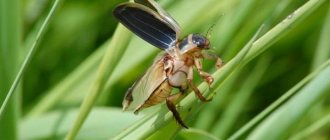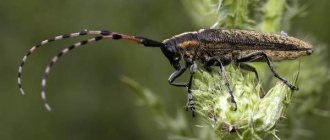- Wild animals
- >>
- Insects
The vast plains of Africa, which are home to many fairly large herbivores, are also home to the scarab beetle . Probably Africa, and the whole planet, has not yet been mired in huge piles of dung thanks to dung beetles, among which scarab beetles have the most honorable place.
Origin of the species and description
Photo: Scarab beetle
Entomologists classify the scarab beetle as belonging to the genus Scarabaeidae, the class Insectae, the order Coleoptera, and the family Lamelidae. This family is characterized by a special shape of the mustache, which can periodically open in the form of a fan consisting of thin movable plates.
Video: Scarab beetle
Currently, science knows more than a hundred representatives of this genus, which usually live in dry steppes, deserts, semi-deserts, and savannas. Most species of scarabs can only be found in the tropical zone of the African continent. The region called the Palaearctic, spanning northern Africa, Europe and northern Asia, is home to approximately 20 species.
The body length of scarab beetles can vary between 9-40 mm. Most of them have a matte black color of the chitinous layer, which becomes more shiny as they mature. Sometimes you can find insects with chitin of a silver-metallic color, but this is very rare. Males differ from females not in color and size, but in their hind legs, which are covered on the inside with golden fringe.
All scarab beetles are very characterized by vegetation on the legs and abdomen, as well as the presence of four teeth on the front pair of legs, which are involved in digging and forming balls of dung.
How to activate the talisman?
Initially, it is necessary to clean the talisman using any known method. Subsequent activation of the amulet is carried out only by the owner. To do this, place the scarab under the rays of the rising sun. The amulet will absorb solar energy and will serve its owner well for a long time.
See all earrings in the “Insects” theme (go to the SUNLIGHT catalog)
Appearance and features
Photo: What a scarab beetle looks like
The body of the scarab beetle has the appearance of a wide, slightly convex oval, completely covered with an exoskeleton. The exoskeleton is a very hard and durable chitinous cover, usually acting as so-called armor that protects the beetle’s body from injuries associated with its type of activity. The head of the scarab beetle is short and wide with six teeth at the front.
The pronotum of the insect is also wide and short, flat, quite simple in shape, has a granular structure and a large number of small lateral teeth. The insect's hard chitinous elytra are more than twice as long as the pronotum, have six longitudinal shallow grooves, and the same uneven granular structure.
The posterior section of the abdomen is bordered by small teeth and covered with sparse vegetation in the form of dark hairs. The same hairs are present on all three pairs of legs. The front legs serve the beetles for digging soil and manure. Compared to other paws, they look coarser, more powerful, massive and are equipped with four outer teeth, some of which have many very small teeth at their base. The middle and hind legs appear longer, thinner, curved and help the insects form balls of dung and also carry them to their destination.
Interesting fact: Dung balls formed by scarab beetles can be tens of times larger than the size of insects.
Nutrition
The diet of this insect is not so varied. What does the dung beetle eat ? The main dish on the daily menu is manure, which gives this beetle its unattractive name. His sense of smell is very developed. With its antennae, like “satellite dishes,” it detects a food source and rushes there at full speed to get ahead of its competitors.
Dung beetle larvae feed on carrion or dung. Their parents provide them with all the food. Adults dilute their monotonous diet with mushrooms and carrion. There are certain species that are capable of not eating throughout their entire lives.
Where does the scarab beetle live?
Photo: Scarab beetle in Egypt
It is traditionally believed that scarab beetles live in Egypt, where they have long been revered and almost worshiped, but the habitat of the insects is much wider. The scarab is found almost throughout Africa, in Europe (western and southern parts of the continent, southern Russia, Dagestan, Georgia, France, Greece, Turkey), in Asia and even on the Crimean Peninsula.
In general, it turns out that scarab beetles prefer a warm or hot climate with short and mild winters, which is typical for the above regions, as well as the coasts of the Black and Mediterranean Seas. Beetles prefer to live on sandy soils in savannas, dry steppes, deserts and semi-deserts, while they try to avoid saline areas.
It is interesting that beetles live on the Crimean peninsula, but probably, due to the salinity of large areas of the region, they are much smaller in size than their Egyptian relatives.
Interesting fact: More than 20 years ago, entomologists tried to detect traces of scarabs in Australia, but these attempts were unsuccessful. Apparently on this continent Mother Nature never had a need for orderlies. And no wonder, Australia has always been famous not for the abundance of wildlife, but for its unusualness, especially since its entire central part is a dry desert sparsely populated by animals.
Now you know where the scarab beetle is found. Let's see what he eats.
Interesting
Well, “for a snack” - one very interesting fact. Few people know that dung beetles, which live in the deserts of Africa, have the ability to collect moisture from fog. To achieve this goal, they spread their wings and stand against the wind. Droplets settle on the convex areas, which over time become large and flow directly into the beetles’ mouths. This is how they drink, getting water practically from thin air! Are you weak?
